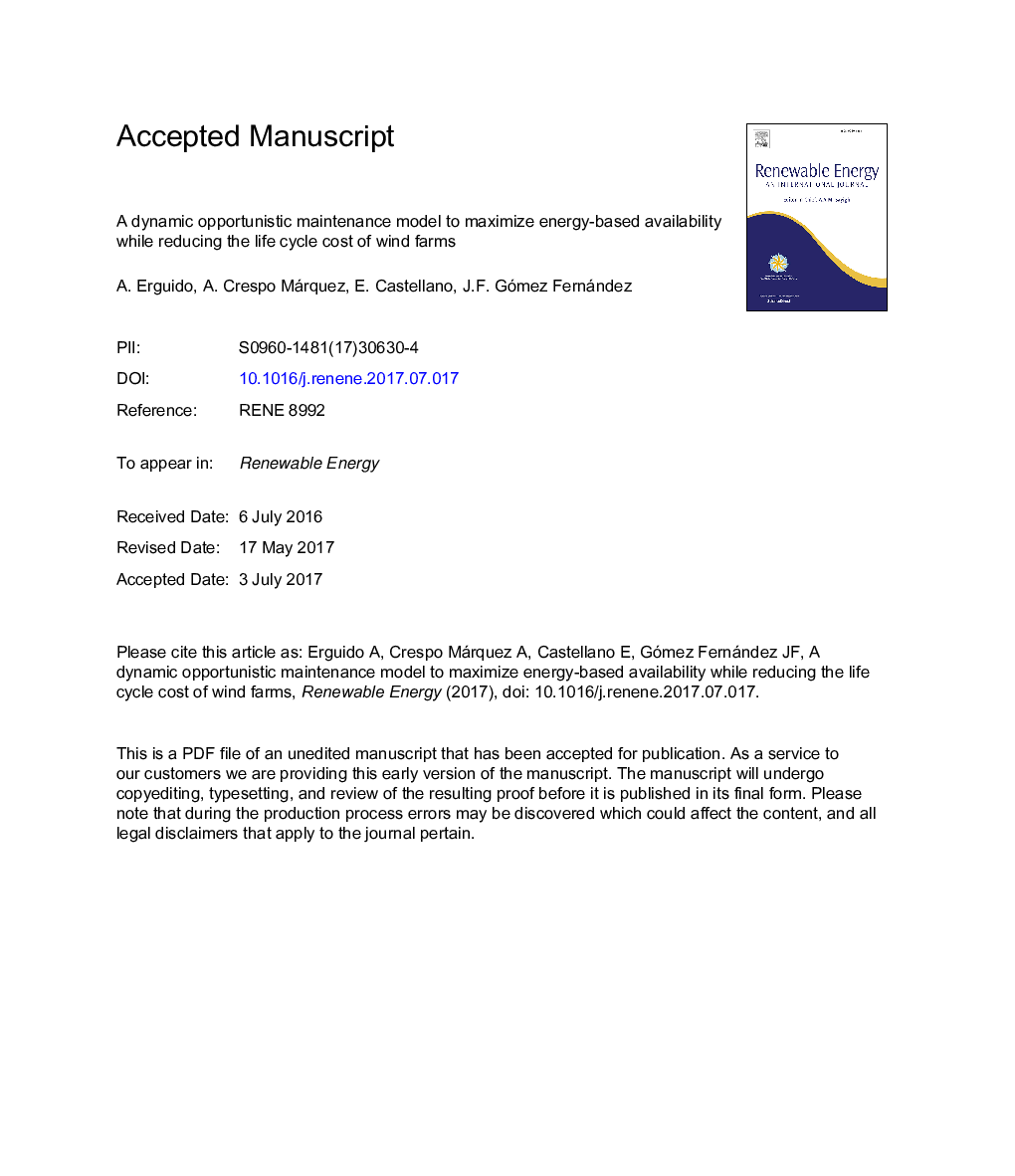| Article ID | Journal | Published Year | Pages | File Type |
|---|---|---|---|---|
| 4926202 | Renewable Energy | 2017 | 25 Pages |
Abstract
Operations and maintenance costs of the wind power generation systems can be reduced through the implementation of opportunistic maintenance policies at suitable indenture and maintenance levels. These maintenance policies take advantage of the economic dependence among the wind turbines and their systems, performing preventive maintenance tasks in running systems when some other maintenance tasks have to be undertaken in the wind farm. The existing opportunistic maintenance models for the wind energy sector follow a static decision making process, regardless of the operational and environmental context. At the same time, on some occasions policies do not refer to practical indenture and maintenance levels. In this paper, a maintenance policy based on variable reliability thresholds is presented. This dynamic nature of the reliability thresholds, which vary according to the weather conditions, provides flexibility to the decision making process. Within the presented model, multi-level maintenance, capacity constraints and multiple failure modes per system have been considered. A comparative study, based on real operation, maintenance and weather data, demonstrates that the dynamic opportunistic maintenance policy significantly outperforms traditional corrective and static opportunistic maintenance strategies, both in terms of the overall wind farm energy production and the Life Cycle Cost.
Related Topics
Physical Sciences and Engineering
Energy
Renewable Energy, Sustainability and the Environment
Authors
A. Erguido, A. Crespo Márquez, E. Castellano, J.F. Gómez Fernández,
